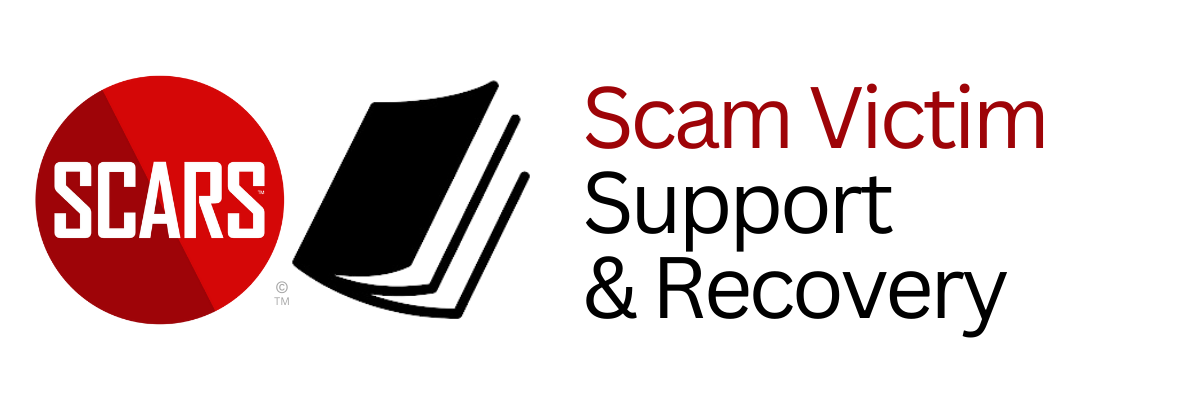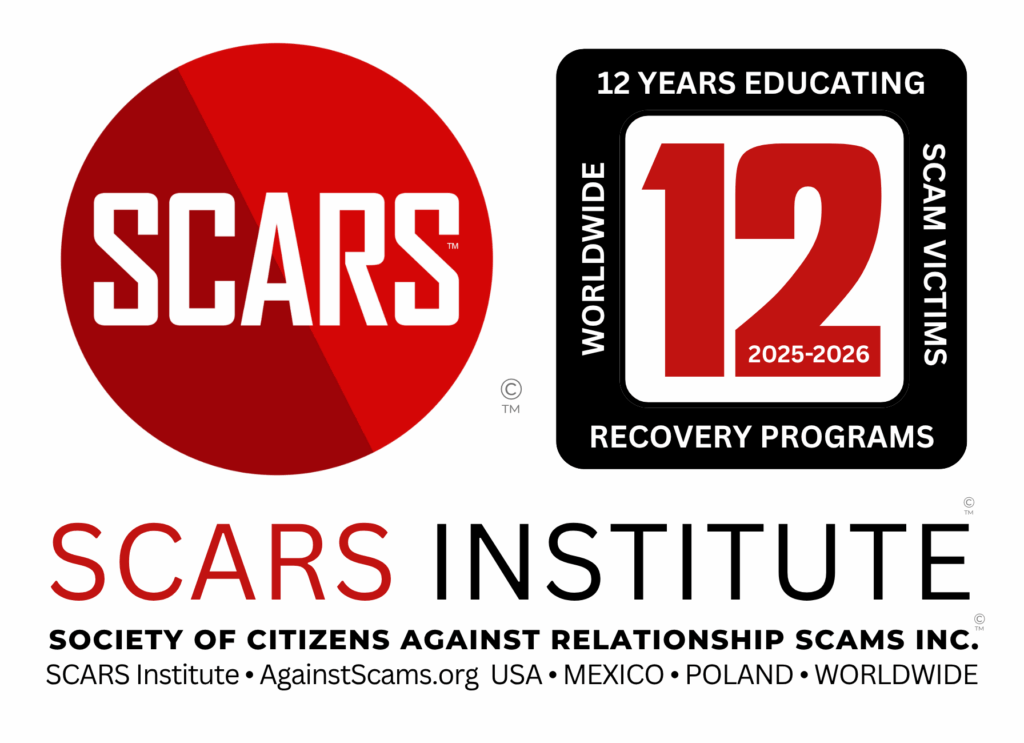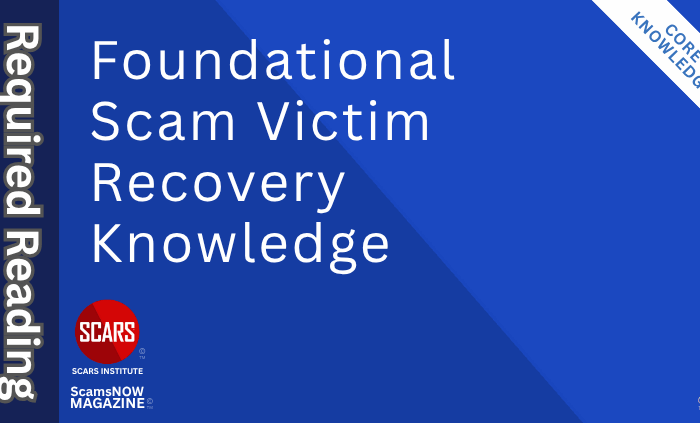
Humming to Control Your Emotions
Scam Victims/Survivors Can Find Calm with a Simple Humming Mindfulness Grounding Exercise
Primary Category: Scam Victim Recovery Psychology / Neuroscience
Author:
• Tim McGuinness, Ph.D., DFin, MCPO, MAnth – Anthropologist, Scientist, Polymath, Director of the Society of Citizens Against Relationship Scams Inc.
About This Article
When you hum, you engage more than your voice; you stimulate your nervous system, ground your emotions, and help yourself process the internal chaos that betrayal trauma often creates. Humming activates the vagus nerve, which plays a direct role in calming your body and restoring emotional regulation. It lowers stress hormones, eases anxiety, interrupts negative thought spirals, and can even boost mood-related chemicals like oxytocin. For many scam victims, this simple act becomes a powerful form of self-guided exposure therapy. Each time you hum, you release pressure from the parts of yourself that feel locked down. You begin to reclaim control over your nervous system without needing to speak or explain. Humming can become a bridge between your silence and your healing. When combined with deep reflection and emotional expression, such as reading and responding to SCARS Institute articles, it becomes a gentle, repeatable practice that gives your mind and body a safe signal: You are not in danger now.
Note: This article is intended for informational purposes and does not replace professional medical advice. If you are experiencing distress, please consult a qualified mental health professional.

Scam Victims/Survivors Can Find Calm with a Simple Humming Mindfulness Grounding Exercise
Imagine a tool for healing that is always with you, free, and accessible anywhere. This is not daydreaming—this is the humble hum. When you hum, you create a soft, steady vibration by closing your lips and letting air pass gently through your vocal cords. This small act can profoundly calm your nervous system. For those of you who have survived scams, betrayal trauma, anxiety, or depression, learning about humming as a healing practice may become a comforting companion on your recovery journey.
Humming activates your vagus nerve, a key channel of the parasympathetic nervous system. This part of your nervous system is your natural rest and digest mode. Activating that switch helps slow your racing heart, settle your breath, quiet your mind, and ease muscle tension. It nudges your body from fight or flight into a state of safety.
A recent article in The Washington Post explains how humming, chanting, and singing generate vibrations that engage the recurrent laryngeal nerve—part of the vagus system—and gently calm your nervous system. Just a few minutes of humming each day can lighten your mood, ease anxiety, and offer deep emotional release through a simple, yet profound, practice.
Why Humming Helps with Anxiety
When anxiety takes hold, you might feel trapped in spiraling thoughts or sudden panic. Humming offers an anchor. Research shows that humming improves heart rate variability and encourages a balanced state where calm becomes possible. One small but illuminating study showed that humming reduced the body’s stress index more than physical activity or sleep.
That rhythmic, low vibration you create mimics controlled breathwork. Slow exhalation, steady voice resonance, and focused awareness come together to interrupt the cascade of stress hormones. Another article highlights that humming activates the vagus nerve, lowering your heart rate and reducing cortisol, the body’s main stress hormone.
The nervous system responds to vibration more powerfully than most people expect. Your voice has the ability to soothe your own system the way a lullaby calms a child. When anxiety flares, those soft hums can be your sanctuary.
Using Humming to Soften Trauma
When trauma has left your nervous system on high alert, you might feel hypervigilant, shaky, or emotionally raw. Humming is a gentle way you can reach into that sensitivity and invite peace back.
Vagus nerve stimulation through breathing, voice, and sound has become a recognized method of helping people with trauma recover emotional balance. The vibrations of humming work like a self-soothing signal. It is something you create, it is within you, and it sends the message to your body that safety is possible now.
A clinical review supports humming-like breath practices such as Bhramari Pranayama. This yoga technique, known as bee breath, promotes parasympathetic dominance and has demonstrated reductions in anxiety, depression, and irritability. One study found that after practicing humming breath, participants experienced significantly reduced depression, anxiety, and stress scores.
Humming becomes your portable refuge. Unlike therapy sessions or deep reflection, you can hum anywhere—your safe room, your vehicle, your bathroom mirror—as often as you need to gently rest, regroup, and reclaim emotional stability.
Lifting Mood When Depression Weighs Heavy
Depression often brings lethargy, emotional weight, and an inner pull toward disconnection. Humming can shift that by inviting physiological joy. The vibrations of humming encourage the release of oxytocin and endorphins—natural chemicals that help elevate mood and strengthen emotional connection.
Humming also encourages the use of your diaphragm and facial muscles. Depression often suppresses movement and expression. These gentle activations provide cues to your brain and body that roots for uplift are still there. It awakens subtle energy that paves the way for presence—even brief moments of clarity.
Professionals have praised chanting and humming for their effect on sleep, mood, inflammation, and stress. UCLA psychiatry professor Helen Lavretsky noted these effects while researching chant and breath techniques, confirming that voicework can offer anti-aging and calming benefits.
Even five minutes of humming can give you a restorative pause. It is not a magical cure, but it is a practice that affirms you are worthy of calm, joy, and bodily harmony.
How to Hum with Intention
Here is a simple way to begin the humming practice in a mindful, comforting way:
- Find a safe space where you feel comfortable.
- Breathe in slowly for three to four seconds, letting your chest and belly fill.
- Exhale over six to ten seconds, letting out a soft “mmmmmm” sound with lips closed.
- Focus on the vibration you feel in your throat, jaw, chest, or even your belly.
- Notice how your heart slows, your brow softens, or your shoulders release.
That is all there is to it. You can do this for one minute if that is all you have. If you feel nourished, extend it to five minutes. Some practitioners recommend humming for 15 minutes to deeply shift stress markers.
The key is gentle curiosity. Let the sound guide you to your breath, your body, and the stillness that lies beneath the anxiety or grief.
Grounding Science and Ongoing Inquiry
While specific studies linking humming to trauma recovery are limited, broad research on vagus nerve stimulation, breathing practices, and mindfulness supports the underlying theory.
A 2023 Holter-based study recorded heart rate variability improvements during humming breath compared to emotional stress or physical activity.
Breathing techniques that share similar mechanisms—like slow-paced breathing and humming—are supported by emerging studies as methods to enhance parasympathetic function and reduce sympathetic arousal.
Meditative practices that align with humming, like mantra recitation, have shown through neuroscience research that focused vocal repetition activates brain areas associated with calm and introspection.
Voice-based regulation methods are also modeled in polyvagal theory, which emphasizes the link between vocal resonance, social engagement, and physiological safety.
You are standing on solid ground when you hum with intention. The science may continue to unfold, but bodies respond and healing moves slowly forward when you give it the right kind of attention.
Using Humming Alongside Your Healing Journey
Humming is not a substitute for therapy, medication, or community support. You are entitled to the full spectrum of care. But humming is an ally you can carry towards any healing practice.
- When you feel anxious, hum.
- When you feel overwhelmed by memories, hum.
- When tears come, hum.
- When sorrow feels too sharp, hum.
- When a faint hope rises, hum.
Each time you choose to hum, you remind your body and mind that you are capable of calming yourself. Each hum is a reclaiming of voice, breath, and safety.
Why Humming Matters Right Now
Scam survivors know too well how the world can betray trust. Healing that betrayal often feels like wading through tough terrain. Humming does not erase the past. Instead, it helps you anchor in the present. It restores confidence in your own nervous system. It whispers that you are not broken, just tender, and still in process.
Every hum matters. It is an invitation back into your body. It is the sound of resilience, breath, and gentle recovery.
Glossary
- Anxiety – A heightened emotional state marked by worry, restlessness, and physical tension. In trauma recovery, anxiety often triggers rapid breathing, racing thoughts, and an overactive nervous system.
- Bee Breath (Bhramari Pranayama) – A yoga-based humming technique where you produce a steady, low-pitched sound while exhaling. It stimulates the vagus nerve and helps reduce stress and anxiety.
- Breathwork – Controlled breathing exercises designed to regulate the nervous system. Practices like deep breathing, alternate nostril breathing, and humming can lower stress and improve emotional balance.
- Calm State – A balanced emotional and physiological condition where heart rate, breathing, and stress responses stabilize, helping you feel safe and grounded.
- Cortisol – A hormone produced during stress. While necessary for survival, prolonged high cortisol levels can worsen anxiety, trauma symptoms, and emotional dysregulation.
- Depression – A mental health condition often linked to trauma, characterized by persistent sadness, low energy, and withdrawal from daily activities. Humming may help stimulate mood-regulating chemicals that counteract depressive states.
- Diaphragm – The primary muscle used in breathing. Engaging the diaphragm fully during humming and deep breathing promotes relaxation and improves oxygen flow.
- Emotional Regulation – Your ability to manage emotional reactions in healthy ways. Stimulating the vagus nerve through humming helps restore balance when your emotions feel overwhelming.
- Endorphins – Brain chemicals released during pleasurable or soothing activities, like humming or chanting. They act as natural mood boosters and pain relievers.
- Facial Muscles – Muscles around the face involved in expression, breathing, and vocalization. Humming gently engages these muscles, improving circulation and stimulating nerve pathways linked to relaxation.
- Fight-or-Flight Response – A stress-driven survival reaction where your body prepares to defend itself or escape danger. Trauma can keep this response overactivated, leading to constant hypervigilance.
- Grounding – A self-regulation technique where you bring your attention to the present moment to reduce panic or spiraling thoughts. Humming can act as a grounding tool by anchoring your awareness in sound and vibration.
- Heart Rate Variability (HRV) – The variation in time between heartbeats, used as an indicator of nervous system balance. Higher HRV is linked to resilience, and vagus nerve stimulation through humming can help improve it.
- Humming – The act of producing a continuous sound with closed lips. This vibration stimulates the vagus nerve and can help reduce anxiety, ease trauma responses, and promote emotional stability.
- Hypervigilance – A trauma-related state where your nervous system stays on high alert, constantly scanning for danger. Humming activates the parasympathetic system to calm this overactive state.
- Mindfulness – The practice of intentionally focusing your attention on the present moment without judgment. Combining mindfulness with humming amplifies its calming effect on the nervous system.
- Nervous System – The network of nerves and cells that control communication between the brain and body. In trauma recovery, rebalancing the nervous system is key to reducing anxiety and depression.
- Oxytocin – A hormone linked to bonding, trust, and emotional safety. Humming can stimulate oxytocin release, helping restore a sense of connection and well-being.
- Parasympathetic Nervous System – Part of the autonomic nervous system responsible for rest, relaxation, and digestion. Humming activates this system through vagus nerve stimulation.
- Polyvagal Theory – A framework by Dr. Stephen Porges explaining how the vagus nerve regulates safety, social connection, and emotional states. Humming is one way to activate the calming branch of this system.
- Relaxation Response – A physiological state opposite to fight-or-flight, where your body slows down, heart rate lowers, and stress hormones decrease. Humming can help trigger this response.
- Self-Soothing – Calming yourself using intentional actions that regulate your emotions and body. Humming works as a natural self-soothing practice by combining breath, sound, and vibration.
- Trauma – An emotional and physiological response to deeply distressing events. It can leave your nervous system dysregulated, but techniques like humming may help restore a sense of safety.
- Vagus Nerve – A major nerve connecting the brain to many parts of the body, including the heart, lungs, and digestive system. Stimulating it through humming activates relaxation and improves emotional balance.
- Voice Resonance – The vibration and tone produced when sound travels through your throat, chest, and facial cavities. Humming enhances resonance, which can positively influence mood and stress regulation.
Reference
- Trivedi, G., et al. (2023). Humming (Simple Bhramari Pranayama) as a stress buster. Cureus. Link
- Jagadeesan, T., et al. (2022). Effect of Bhramari Pranayama intervention on stress. PMC. Link
- Kuppusamy, M., et al. (2018). Effects of Bhramari Pranayama on health. ScienceDirect. Link
- Hello Inner Light (2025). Humming Bee Breath benefits. Link
- Psychology Today (2024). The Power of Humming. Link
- Washington Post (2025). Voicework to reduce stress. Link
- Real Simple (2025). Humming to alleviate stress. Link
- Glamour (2024). Humming as vagus stimulation. Link
- Cedars-Sinai blog (2024). Bolster your brain by stimulating the vagus nerve. Link
- Verywell Mind (2022). Vagus nerve therapy mood regulation. Link
- Wikipedia (2025). Vagus nerve stimulation overview. Link
-/ 30 /-
What do you think about this?
Please share your thoughts in a comment below!
Important Information for New Scam Victims
- Please visit www.ScamVictimsSupport.org – a SCARS Website for New Scam Victims & Sextortion Victims.
- SCARS Institute now offers its free, safe, and private Scam Survivor’s Support Community at www.SCARScommunity.org – this is not on a social media platform, it is our own safe & secure platform created by the SCARS Institute especially for scam victims & survivors.
- SCARS Institute now offers a free recovery learning program at www.SCARSeducation.org.
- Please visit www.ScamPsychology.org – to more fully understand the psychological concepts involved in scams and scam victim recovery.
If you are looking for local trauma counselors, please visit counseling.AgainstScams.org
If you need to speak with someone now, you can dial 988 or find phone numbers for crisis hotlines all around the world here: www.opencounseling.com/suicide-hotlines
Statement About Victim Blaming
Some of our articles discuss various aspects of victims. This is both about better understanding victims (the science of victimology) and their behaviors and psychology. This helps us to educate victims/survivors about why these crimes happened and not to blame themselves, better develop recovery programs, and help victims avoid scams in the future. At times, this may sound like blaming the victim, but it does not blame scam victims; we are simply explaining the hows and whys of the experience victims have.
These articles, about the Psychology of Scams or Victim Psychology – meaning that all humans have psychological or cognitive characteristics in common that can either be exploited or work against us – help us all to understand the unique challenges victims face before, during, and after scams, fraud, or cybercrimes. These sometimes talk about some of the vulnerabilities the scammers exploit. Victims rarely have control of them or are even aware of them, until something like a scam happens, and then they can learn how their mind works and how to overcome these mechanisms.
Articles like these help victims and others understand these processes and how to help prevent them from being exploited again or to help them recover more easily by understanding their post-scam behaviors. Learn more about the Psychology of Scams at www.ScamPsychology.org
SCARS INSTITUTE RESOURCES:
If You Have Been Victimized By A Scam Or Cybercrime
♦ If you are a victim of scams, go to www.ScamVictimsSupport.org for real knowledge and help
♦ SCARS Institute now offers its free, safe, and private Scam Survivor’s Support Community at www.SCARScommunity.org/register – this is not on a social media platform, it is our own safe & secure platform created by the SCARS Institute especially for scam victims & survivors.
♦ Enroll in SCARS Scam Survivor’s School now at www.SCARSeducation.org
♦ To report criminals, visit https://reporting.AgainstScams.org – we will NEVER give your data to money recovery companies like some do!
♦ Follow us and find our podcasts, webinars, and helpful videos on YouTube: https://www.youtube.com/@RomancescamsNowcom
♦ Learn about the Psychology of Scams at www.ScamPsychology.org
♦ Dig deeper into the reality of scams, fraud, and cybercrime at www.ScamsNOW.com and www.RomanceScamsNOW.com
♦ Scam Survivor’s Stories: www.ScamSurvivorStories.org
♦ For Scam Victim Advocates visit www.ScamVictimsAdvocates.org
♦ See more scammer photos on www.ScammerPhotos.com
You can also find the SCARS Institute’s knowledge and information on Facebook, Instagram, X, LinkedIn, and TruthSocial
Psychology Disclaimer:
All articles about psychology and the human brain on this website are for information & education only
The information provided in this and other SCARS articles are intended for educational and self-help purposes only and should not be construed as a substitute for professional therapy or counseling.
Note about Mindfulness: Mindfulness practices have the potential to create psychological distress for some individuals. Please consult a mental health professional or experienced meditation instructor for guidance should you encounter difficulties.
While any self-help techniques outlined herein may be beneficial for scam victims seeking to recover from their experience and move towards recovery, it is important to consult with a qualified mental health professional before initiating any course of action. Each individual’s experience and needs are unique, and what works for one person may not be suitable for another.
Additionally, any approach may not be appropriate for individuals with certain pre-existing mental health conditions or trauma histories. It is advisable to seek guidance from a licensed therapist or counselor who can provide personalized support, guidance, and treatment tailored to your specific needs.
If you are experiencing significant distress or emotional difficulties related to a scam or other traumatic event, please consult your doctor or mental health provider for appropriate care and support.
Also read our SCARS Institute Statement about Professional Care for Scam Victims – click here
If you are in crisis, feeling desperate, or in despair, please call 988 or your local crisis hotline – international numbers here.
More ScamsNOW.com Articles
A Question of Trust
At the SCARS Institute, we invite you to do your own research on the topics we speak about and publish. Our team investigates the subject being discussed, especially when it comes to understanding the scam victims-survivors’ experience. You can do Google searches, but in many cases, you will have to wade through scientific papers and studies. However, remember that biases and perspectives matter and influence the outcome. Regardless, we encourage you to explore these topics as thoroughly as you can for your own awareness.















![NavyLogo@4x-81[1] Humming to Control Your Emotions - 2025](https://scamsnow.com/wp-content/uploads/2025/04/NavyLogo@4x-811.png)









![scars-institute[1] Humming to Control Your Emotions - 2025](https://scamsnow.com/wp-content/uploads/2025/04/scars-institute1.png)

![niprc1.png1_-150×1501-1[1] Humming to Control Your Emotions - 2025](https://scamsnow.com/wp-content/uploads/2025/04/niprc1.png1_-150x1501-11.webp)
